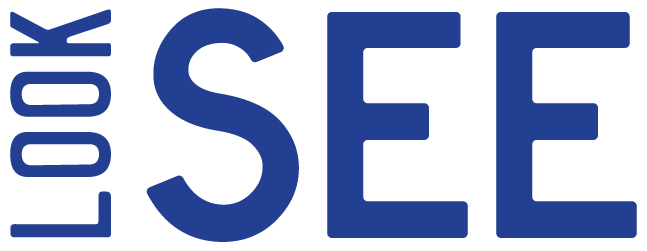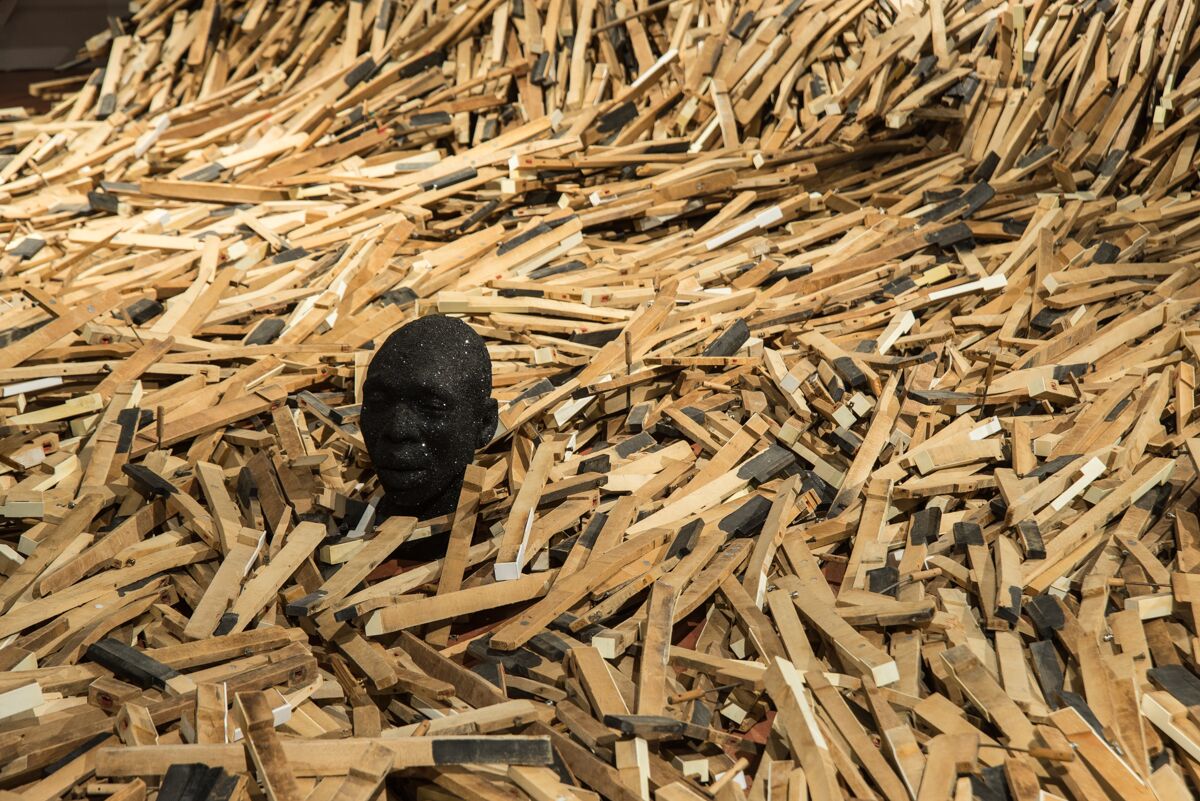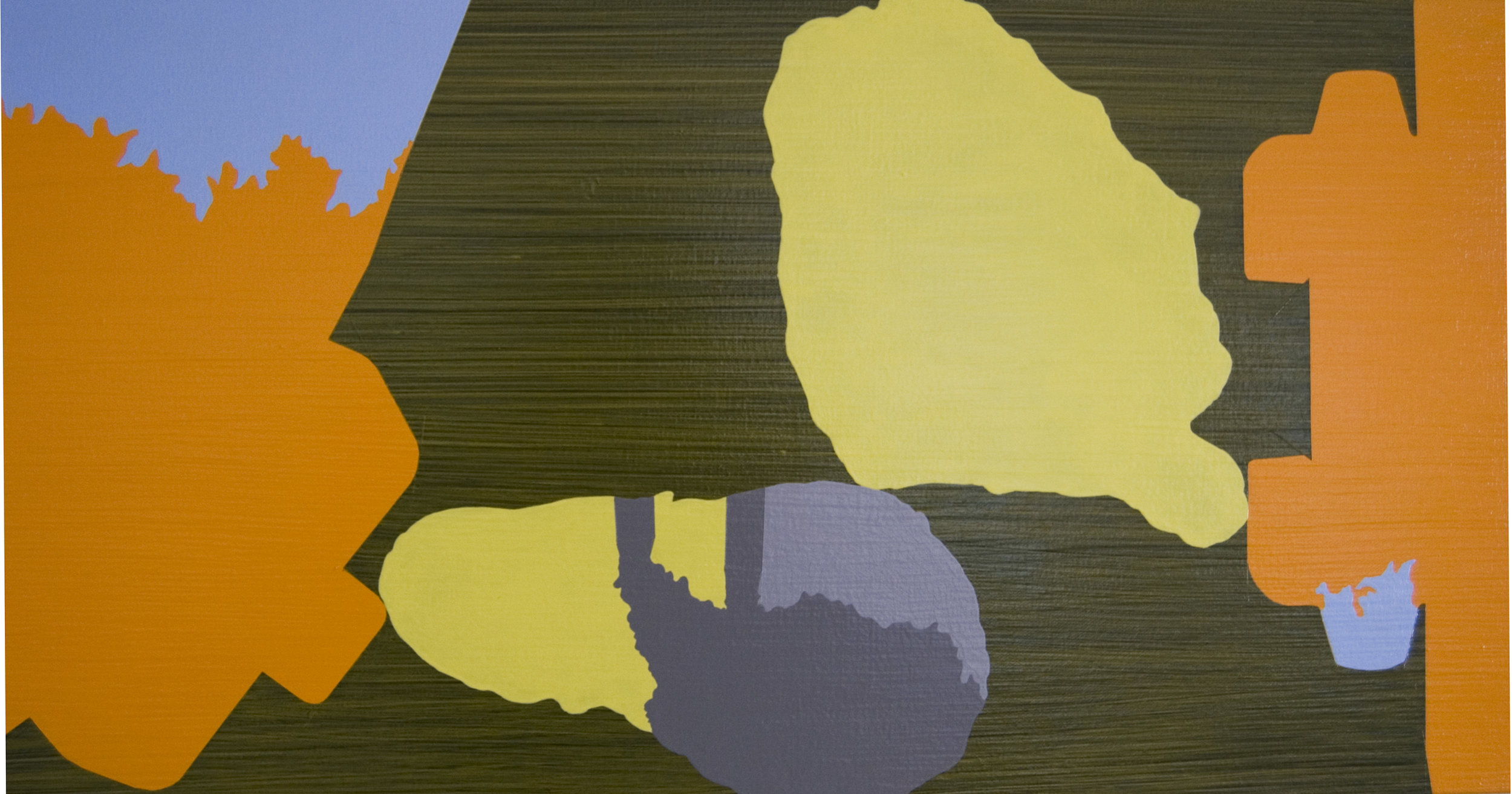LookCLOSE: Beneath the Cloak

by Amanda Dalla Villa Adams | December 14, 2017
Accumulation is central to artist Leigh Suggs’ practice. She favors a materialist approach that uses repeating objects or forms to make two and three-dimensional works that draw attention to the act of seeing—and the disruptions that happen therein. Often her work plays visual tricks on audience members. For instance, a pierced, two-dimensional paper creates the impression of a three-dimensional form.
Known for her obsessive habits of hole punching, gluing cutouts, or weaving, Suggs spends an inordinate amount of time in the activity of artmaking. Her drawings, however, follow a slightly different method, as she sets aside objects to focus instead on shape and the rendering of forms. In a new series of drawings, Suggs shifts focus from the process of seeing to issues of identity as she contemplates familial relationships as well as the figurative and metaphorical roles of a cloak.
Leigh Suggs, Just the Two of Us, 2017. Ink on abaca, 18 x 24 inches. Image courtesy of the artist and Reynolds Gallery, Richmond.
Made in 2017, Just the Two of Us and The Weight of Disguise are black ink drawings of quadrilaterals in various sizes that repeat to create an undulating, rippling pattern that brings to mind Bridget Riley’s Op-art paintings of the 1960s. Think, for example, of the Tate Modern’s Fall, 1963. Yet while Riley took an all-over approach from Abstract Expressionist painting, Suggs’ four-sided shapes combine to create one organic form surrounded by a blank manila ground. By re-introducing three-dimensionality to the modernist grid, Suggs puts the grid in flux and exchanges a pure abstract field for one of representation. In both drawings, Suggs’ forms take on figurative shapes, as several elongated mounds separate along the top while the bottom of the shape pools together like a horizon line. Just the Two of Us features a bifurcated mound, and The Weight of Disguise is divided into four peaks that echo the mountain ridges of the Carolina Piedmont, where Suggs grew up.
Leigh Suggs, The Weight of Disguise, 2017. Ink on abaca, 36 x 36 inches. Image courtesy of the artist and Reynolds Gallery, Richmond.
For Suggs, the drawings and the overall forms are a response to a series of photographs by artist Kimowan (Metchewais) McLain, with whom Suggs studied when she was an undergraduate at the University of North Carolina at Chapel Hill in 2002 and 2003. McLain, a First Nations artist who died from a brain tumor in 2011, was known for his conceptual practice in a variety of media—performance, sculpture, and photography—that explored his complicated identity as both an indigenous and Western male. In 2005, McLain began photographing himself and family members cloaked in indigenous blankets. In some shots, the blanket engulfs and fully obscures the body. In other photographs, the figure clutches the blanket underneath to activate the cloth while still disguising the body.
Although an anachronistic forerunner, McLain’s photographs bear visual similarities to Moroccan-artist Lalla Essaydi’s Converging Territories (2002-4), a photographic series of women and children draped in veils of varying sizes that progressively conceal the body as the women age. McLain, however, has covered the human completely in the photographs, which erases all indicators of gender, age, or nationality.
Installation at Light Art + Design, June 18, 2011. (left) Leigh Suggs, My Diguise 1, 2011, acrylic and ink drawing on handmade paper, 30 x 22 inches; (right) Kimowan (Metchewais) McLain, Striped Man, c. 1997-1998, mixed media on paper, 41 x 66 inches.
In her drawings, Suggs likewise has disguised her figures, but she takes it one step further than McLain as her drawings float dialectically between biomorphic and abstract form. What Suggs calls “cloaked forms” have appeared in her practice since at least 2011 beginning with the work, My Disguise 1, an acrylic and ink drawing on handmade paper comprised of coagulating triangles that accumulate into a lace-like pattern.
Leigh Suggs, My Disguise 1, 2011. Acrylic and ink on handmade paper, 30 x 22 inches. Image courtesy of the artist.
For the artist, the “cloaked forms” bring to mind family dynamics—specifically her own, having grown up in a family of four—as well as notions of security versus disguise, protection versus vulnerability, the value of a person, and the effects of death. These drawings also allude to early twentieth-century physician Duncan MacDougall’s “21 Gram Theory,” a flawed scientific experiment that aimed to prove the mass of a person’s soul by calculating the weight of a person prior to and immediately after death. Although his trial size was small—just six people—and discredited by the scientific community, Suggs takes from MacDougall’s experiments a sense of, as she describes it,
hopefulness that we all amount to something, or mean something. Hopeful that our time isn’t just ‘time.' . . .If we know our soul is quantified, we know that we are valuable, we know that an exchange has just taken place. We are no longer just another person who died—just a body. 21 grams can represent what makes us who we are . . .what’s hidden beneath the bones, the muscles, the organs, the skin.
For an artist whose practice has valued optical illusions or trying to materially concretize the ephemeral floaters that impede her own line of vision, Suggs has cloaked or camouflaged (arguably both a protective and oppressive action) the bodies who are genetically and emotionally closest to her. By literally cutting off vision of a body, Suggs has imparted a sense of finality akin to the reality of death. With these drawings, Suggs admits there is a certain awareness of “being afraid to die” as she considers, “what does death look like?” Yet these cloaked forms also reinforce the presence of bodies acting as an armature underneath the fabric, which preserves the bodies and their connections to one another under a single protective blanket. It seems to suggest that even in the midst of death, the family ties of life extend outside linear time.
A Richmond-based independent art writer, curator, and educator, Amanda Dalla Villa Adams is a PhD candidate in art history at VCU. She is a regular contributing art critic to Style Weekly and has contributed writing to Artforum, Burnaway, ext. 1708, and Sculpture. Her writing has also appeared in exhibition catalogs published by the Visual Arts Center of Richmond and Sediment Gallery as well as in peer-reviewed essays published by the Smithsonian's Archives of American Art and Art Inquiries.





